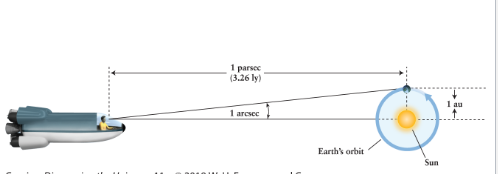Chapter 2 - Gravitation and the Motion of the Planets
1/22
There's no tags or description
Looks like no tags are added yet.
Name | Mastery | Learn | Test | Matching | Spaced |
|---|
No study sessions yet.
23 Terms
What did Nicolaus Copernicus theorize?
He theorized in 1543 under the title De revolutionibus orbium coelestium (On the Revolution of the Heavenly Spheres) that the planets had circular orbits around the Sun.
What did Tycho Brahe theorize?
He theorized that earth is stationary, with the Sun and the Moon revolving around it while all the other planets revolve around the Sun. This was called the Tychonic system.
What is the Tychonic System?
It was a theory by Tycho Brahe that the Earth is stationary and the Sun + Moon rotate around it while all other planets rotate around the Sun.
What were some of the major acomplishments of Galileo Galilei?
He formulated laws of falling bodies, saying all objects fall at the same rate. He also made a telescope and made a ton of discoveries that contradicted Aristotle and the Roman Catholic Church. This was all published in the book Dialogues Concerning the Two Chief World Systems.
What is parallax?
This is when nearby objects are viewed at different angles from different places, resulting in a shift in their apparent position.
Why do we use parallax in astronomy?
We use it to measure distances to nearby stars.
What is Kepler’s First Law?
It states that the orbit of each planet around the Sun is an ellipse with the Sun at one focus. Essentially, the planets move in elliptical paths, not circular ones.
What is Kepler’s Second Law?
It states that a line joining a planet and the Sun creates equal ares in equal intervals of time. Essentially, the planet moves faster when closer to the Sun and slower when farther away.
What is Kepler’s Third Law?
It states that the square of a planet’s sidereal period around the Sun is the square of its average distance from the Sun. Essentially, the further a planet is from the sun, the longer it takes to complete one orbit
What is an astronomical unit (au)? think average :)
It is the average distance between Earth and the Sun
What is 1 au in km?
1.5 × 108 km
What is 1 light year into km?
9.46 × 1012 km
What is 1 light year in au?
63,200

What is a parsec?
It is the distance at which two objects separated by 1 au make an angle of one arcsec.
How many light years is one parsec?
3.26
What is acceleration?
It is the rate at which velocity changes with time.
What is velocity?
It is the speed and diretion of an object.
What is linear momentum?
It indicates how much energy is available to an object because of its motion in a straight line.
What is the Conservation of Linear Momentum? Hint: sounds like one of Newton’s laws
It states that a body maintains linear momentum unless acted upon by an external force.
What is angular momentum?
It is a measure of how much energy is stored in ab object due to its ROTATION and REVOLUTION.
What is Conservation of Angular Momentum?
It states that a body maintains its angular momentum less acted upon by an external force.
What is Newton’s Law of Universal Gravitation?
It states that two objects will attract each other with a force that correlates to the product of their masses AND is inversely proportional to the square of the distance between them.
F = G(m1m2/r2)
What is a conic section?
It’s